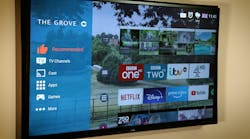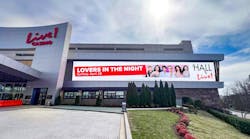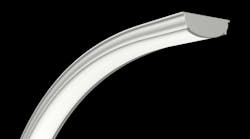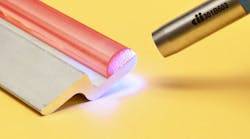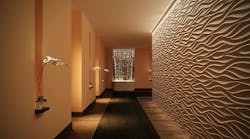Date Announced: 13 Feb 2012 Growing staff numbers and the desire to bring various office locations together under one roof was the reason why the HDI-Gerling property insurance group commissioned a new group head office building in the north-eastern outskirts of Hanover. The architectural competition launched for this purpose was won by ingenhoven architects, who designed an administrative building with a floor space of 75,000 m2, including a central atrium and office wings arranged like the sails of a windmill. The discreet elegance of the building immediately strikes the eye. “We did not want to build a palace for our company”, says chairman of the Board Christian Hinsch during the presentation of the new six-storey building for 1,850 staff members, “but we shouldn't hide our light under a bushel either.”It was important to the building owners that the building was adequately sized, designed in an aesthetically pleasing way and provided workplaces of equivalent quality, but they also wanted the building to consume as little energy and resources as possible. The essential components of the environmentally compatible building concept comprise triple glazing, thermally activated ceilings and parapets, recuperators connected to the atrium intended to act as a climate buffer, the utilisation of geothermal energy for heating and cooling – and all the offices were fitted with energy-efficient, flexible lighting solutions by Zumtobel.Interior spaces flooded by daylightGround floor areas with room-height glass walls and meticulously planned open spaces anchor the office wings into the surrounding landscape and lend the structure of the building a light, transparent look, an impression that is only reinforced on entering the atrium. The sweeping glass façades and the glass roof supported on an elegant steel structure produce an interior space that is bathed in light, housing a reception and event area for up to 1,500 visitors, a cafeteria and an informal meeting point as well as providing the central interface with the directly adjacent office floors.Capsule-shaped building cores with emergency stairs, adjoining rooms and meeting points mark out the transition between the atrium and office premises on each floor. The architects designed the stub-shaped office corridors that branch off from here with room-height glass walls throughout, in keeping with HDI's corporate culture of openness. Low windowsills and glazed façades allow daylight to penetrate deep inside the building.Artificial lighting solution for all task areasThe design brief for the office lighting concept developed through close liaison between Zumtobel, Tropp Lighting Design and the architects was to develop an aesthetically attractive, flexible, intelligently controllable and efficient lighting solution that had to work in all office premises without any supplementary luminaires. A total of 3,996 double-length Ecoos pendant luminaires positioned along the room axes were used. In combination with a modern lighting control unit, it is easy to add just the right amount of artificial lighting, as required. The fact that control units can be used in any office at any time to individually override pre-set automatic system actions was an essential factor in securing user acceptance.Flexibility and energy efficiency even for future room configurationsEasy installation/removal of modular Ecoos pendant luminaires also creates the best basis for responding to any future changes in floor plan configurations such as dividing large spaces up into smaller units. A variant model with additional centrally and laterally located LED downlights is used to realise special lighting scenes in Management Board rooms and several larger conference rooms.Ecoos proves to be a particularly energy-saving luminaire thanks to the mix of direct, indirect and lateral light components. The fluorescent lamps fitted provide high light output levels and pleasant light colours in the direct light component. This is beneficially counterbalanced by the luminaire's diffuser optic, which ensures uniform, indirect illumination of the ceiling and room. Tried-and-tested MPO+ technology provides additional flexibility, as it reduces any glare produced by the light source; accordingly the luminaire can also be installed directly above the workstation.In principle, all the planning for HDI's group head office was carried out in accordance with the guidelines of the German Sustainable Building Council (DGNB). As the owner/occupier, the client nevertheless ultimately opted to dispense with any official certification procedure, which, among other reasons, ensured that the financial resources this freed up could be used to realise other ecological measures. Less prestigious areas, such as emergency staircases, have reaped the benefit of this indirectly with their aspirational design featuring exposed high-grade concrete and flush-fitted Linaria luminaires.
Contact
Nadja Frank, M.A. PR Manager Schweizer Str. 30 A-6851 Dornbirn Tel. +43-5572-390-1303 Fax. +43-5572-390-91303
E-mail:[email protected]
Web Site:www.zumtobel.com


